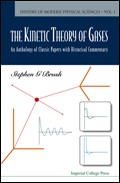On Matter, Living Force, and Heat
A lecture at St. Ann's Church Reading-Room, Manchester, 28 April, 1847; reported in the Manchester Courier, 5 and 12 May, 1847; reprinted in The Scientific Papers of James Prescott Joule, The Physical Society, London, 1884, pp. 265–76.
Matter may be said to be defined by the attributes of impenetrability and extension; it also has a number of properties, such as gravity or weight, repulsion, inertia, and living force (kinetic energy). The last property is simply the force of bodies in motion, and is proportional to their weight and to the square of their velocity. Living force may be transferred from one body to another in collisions, or by attraction through a certain distance. It would seem absurd that this living force can be destroyed, or even lessened, without producing the equivalent of attraction through a given distance or heat, despite the fact that until very recently a contrary opinion has been generally held. We have reason to believe that the manifestations of living force on our globe are, at the present time, as extensive as those which have ever existed, and that the motions of air and water are not annihilated by friction but only converted to heat. The quantity of heat produced is always in proportion to the amount of living force absorbed; the living force possessed by a body of 817 lb when moving with the velocity of eight feet per second is convertible into the quantity of heat which can raise the temperature of 1 lb of water by one degree Fahrenheit.
Until recently it was thought that heat is a substance; but we have shown that it can be converted into living force and into attraction through space, so that it must therefore consist of either living force or of attraction through space. It seems to me that both hypotheses are probably true. There is reason to suppose that the particles of all bodies are in a state of rapid motion; the velocity of the atoms of water, for instance, is at least a mile per second. Similarly, the heat required to melt ice must be that needed to overcome the attraction of the particles for each other.


